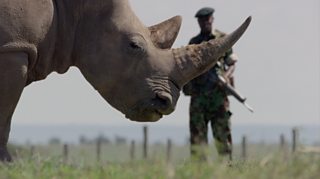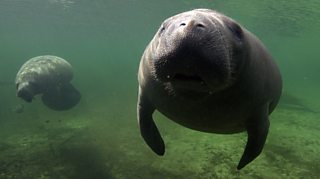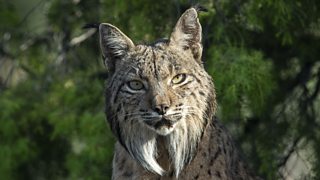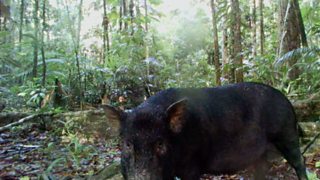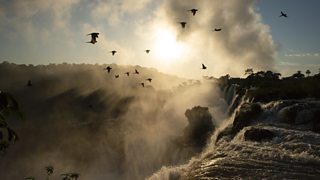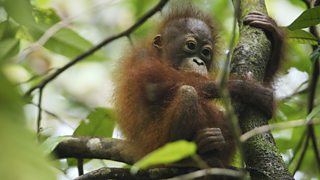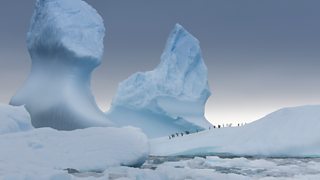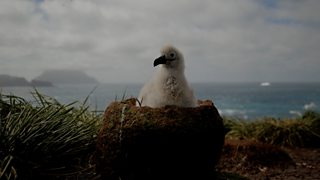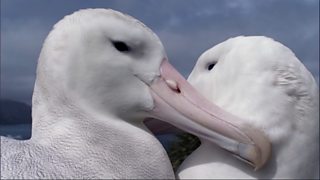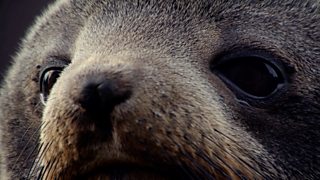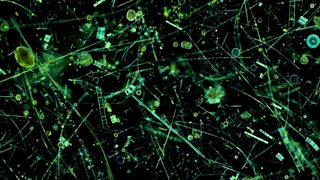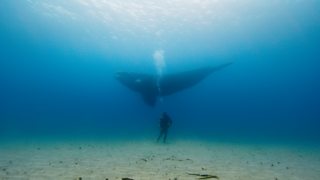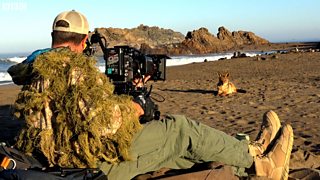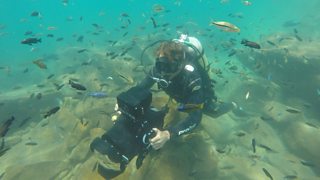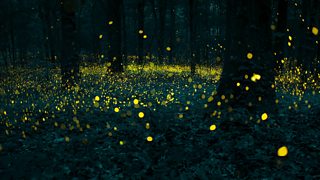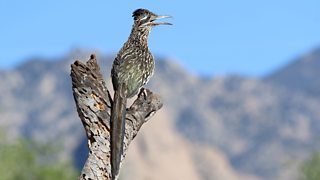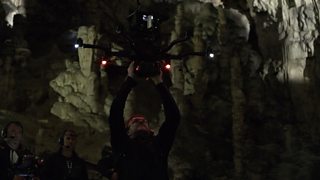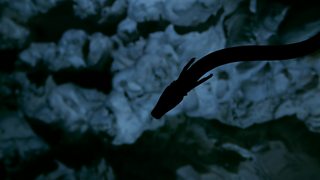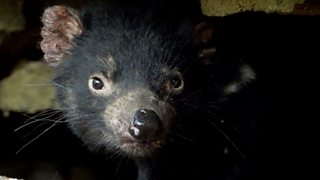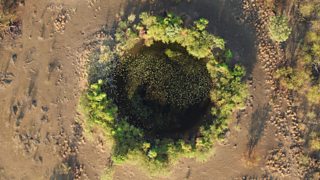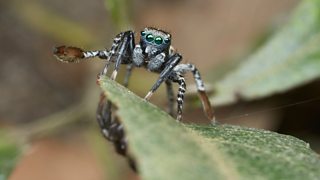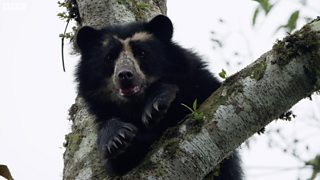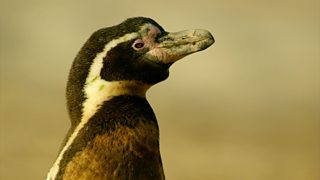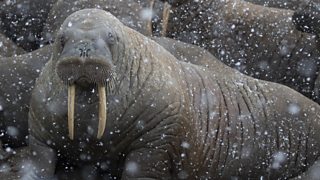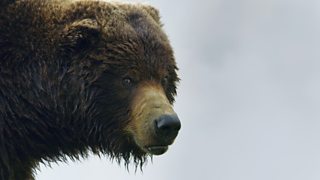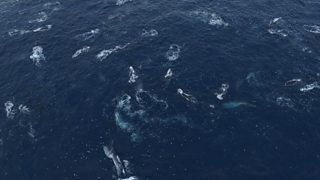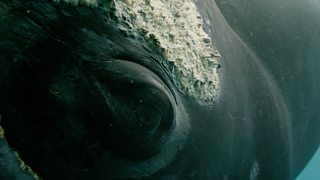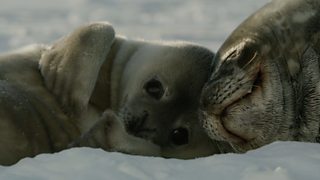Antarctica: A frozen continent in a warming world
By Tom Parry, Junior Researcher on Seven Worlds, One Planet

Ice defines the white continent and its surrounding ocean – only 2% of Antarctica is free of it, with ninety percent of the world’s entire stock of ice locked up on the frozen continent. What does the future hold for Antarctica in our warming world?
It covers an area of almost 12 million km虏 and contains 30 million km鲁 of ice, 60% of the world鈥檚 freshwater.
Antarctica’s ice sheet is now being lost five times faster than in the 1990s, when detailed satellite records began. But Antarctica holds its ice in three different forms, each of which will be affected differently – so here’s your guide to the frozen continent and how it’s being affected by climate change.
Ice sheets
Ice sheets are huge plates of ice that sit on continental land or on the seabed, rather than floating in the ocean. The Antarctic Ice Sheet is the largest single mass of ice on the planet. It covers an area of almost 12 million km² and contains 30 million km³ of ice, 60% of the world’s freshwater. Five kilometres thick in places, it is so heavy that it has pushed down parts of the land it rests on to below sea level.
But even this mighty structure is vulnerable to climate change. The Antarctic Ice Sheet is thinning, and rapidly. In some places, ice has thinned by more than 120 metres. West Antarctica has been by far the most affected – a recent study by 80 polar scientists found that between 2012 and 2017 the region was losing 159 billion tonnes of ice each year, more than twice the rate of the early 2000s and triple that of the mid 1990s.
This is the ice that affects sea level, because it sits above the ocean’s surface. Scientists have calculated that if just the West Antarctic Ice Sheet were to collapse and melt, it would cause a global sea level rise of 3.3 metres.
Ice shelves
Unlike ice sheets, ice shelves float on the ocean surface – but they originate from the land. Ice shelves are fed by vast glaciers of compacted snow which flow out onto the sea and eventually break into icebergs that drift away into the ocean. Ice shelves surround most of Antarctica and the largest, the Ronne-Filchner Ice Shelf, is the size of Spain.

The ice shelves that encircle Antarctica serve a very important role in holding back the continent’s vast ice sheet from falling into the sea. This safeguard is now at risk. Ice shelves are being exposed to both rising sea and air temperatures. Since the 1950s, nearly 35,000 km² of ice shelf has been lost from the Antarctic Peninsula alone. As the ice shelves crumble away, they expose the ice sheets behind them.
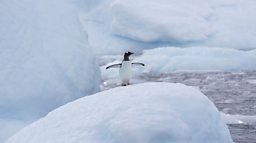
Sea Ice
While ice sheets and shelves are long-lived bodies formed from snowfall, sea ice is frozen seawater and fluctuates with the seasons. The Southern Ocean surrounds Antarctica, and in winter as much as 90% of it freezes over. In the following summer months almost all of it melts and the continent’s frozen surface shrinks to half the size.
Southern Ocean temperatures have been increasing year on year, and in 2018 we saw the lowest extent of Antarctic sea ice on record. This is a recent trend, but a worrying one. As the sea ice is lost it exposes the ice shelves, and in turn the ice sheet behind them.
The future of the frozen continent, and the vast stock of ice it holds, is uncertain.
Saving Seven Worlds
-
![]()
The last rhinos
Watch the video
-
![]()
Colliding worlds
Watch the video
-
![]()
A lifeline for the Iberian lynx
Read the article
-
![]()
Rainforest invaders
Watch the video
-
![]()
Australia's hidden past
Watch the video
-
![]()
Protecting a South American wonder of the world
Read the article
-
![]()
The vanishing forest
Watch the video
-
![]()
How you can save Asia鈥檚 jungles
Read the article
-
![]()
A sanctuary for the endangered whale shark
Read the article
-
![]()
First steps to safety
Watch the video
-
![]()
A frozen continent in a warming world
Read the article
-
![]()
The grey headed albatross faces extinction
Watch the video
-
![]()
The fisherman's good luck omen
Watch the video
-
![]()
Fur seals pups have the base surrounded
Watch the video
-
![]()
The Southern Ocean is a globally important carbon sink
Watch the video
-
![]()
An alien invader is colonising Antarctic waters
Watch the video
On location
-
![]()
The crew's most memorable filming moments
Read the article
-
![]()
The quest to film the elusive brown hyena
Watch the video
-
![]()
A fish tale with a twist
Read the article
-
![]()
Tales from Tennessee
Red the article
-
![]()
Firefly fireworks
Read the article
-
![]()
Filming in Frozen Swamps
Read the article
-
![]()
The roadie experience
Read the article
-
![]()
Drama in the troop
Read the article
-
![]()
Flying underground
Watch the video
-
![]()
Filming dragons
Read the article
-
![]()
Devils on the edge
Watch the video
-
![]()
How drones helped reveal the wonders of Seven Worlds
Read the article
-
![]()
A Peek-a-Boo veteran in the jungles of Australia
Read the article
-
![]()
Finding and filming wildlife in the jungle
Read the article
-
![]()
Walking with cats
Read the article
-
![]()
A bear called Paddington
Watch the video
-
![]()
Hiding in plain sight
Watch the video
-
![]()
Walrus on the edge
Read the article
-
![]()
Bears in the Valley of the Geysers
Read the article
-
![]()
The search for the fin whale
Watch the video
-
![]()
Gentle giants
Watch the video
-
![]()
Extreme parenting
Watch the video
